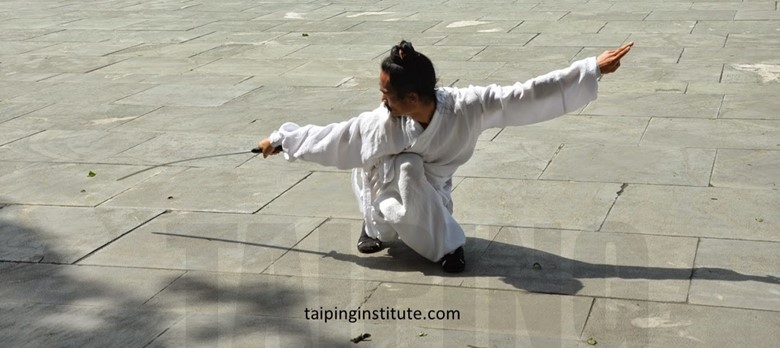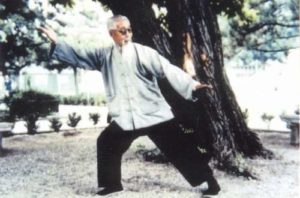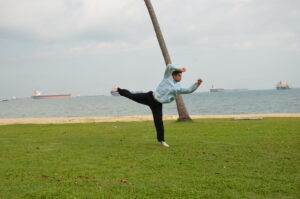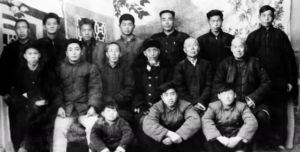Whilst Wudang is well known for its Sword methods, few if any of the Swords practiced on Wudang Mountain have their origin in that fame. The most renowned Wudang Sword Master in recorded history was “God of Sword” Li Jinglin (李景林, 1885-1931) . Today a number of swords have appeared into the Wudang Curriculum, each with their own focus and techniques.
Taiyi Xuanmen Sword is stated as belonging to the sword methods of the Taiyi School. The sword methods are special as it combines the slow and fast mutually, it integrates the Hard and the soft, in practice the sword must pursue the body’s directive so the body leads the sword. The six harmonies between the Hands, Eyes, Body, Method and stepping reach a marvelous spirit.
A nice poem explains “As the earth trembles the birds disperse and fly away, the dust rolling above ground does not settle down, between a hit, Flurried like a gentle breeze the sword cannot be seen, within thousands of transformations, yet the sword still cannot be found”
The Xuanmen Sword is said to move like a grey dragon exiting water, light as a lively cat pouncing on a mouse, within each movement, the clarity of Yin and Yang is obvious, the body conceals the Bagua, whilst the footwork steps along the Nine Palaces, the internal combines with Qi, the external combines with the shape. Amongst the sword methods of Wudang Mountain it is considered a treasure, a secretly transmitted method.
The Taiji Xuanmen Sword was developed on the basis of a manual that was found in Beijing. A gentlemen known as Xiao Xian, whom had found this manual with the names of what seem to be sword methods but no instruction on their execution. He worked with the help of a Wushu Coach Li Yongchang from the Beijing Sports Academy who tried to interpret and re-create the set. In the 1980’s it was then published in a series of three articles over three issues in [Wudang] Magazine. In the 1990’s it appeared within the Wudang Mountain Sanfeng Pai Curriculum.
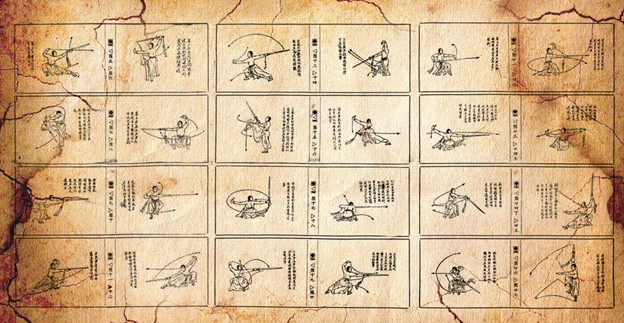
The Xuamen Sword comprises 72 techniques. Whilst its body methods when combined with the sword are nice, there is an emphasis on basic sword techniques such as Pi (chop), Ce (Stab), Liao (Uplift), Mo (Smear), Chou (draw), Jie (intercept), Dao (overturn) and Heng (cross). One of the most common techniques include turning cross step slicing sword, the integration of Cloud sword techniques, a little Bagua stepping section, and quite a number of integrated Liao (Parry and upper cut) swords as examples.
The sword set/routine is well developed with very aesthetic qualities. Guess Xiao Xian and Li Yongchang would never have known at time of their work, how widespread the Taiyi Xuanmen Sword would become and that it would be representative of Wudang Sword.

